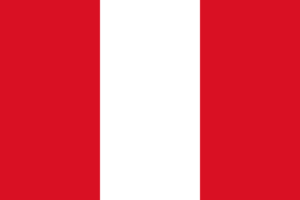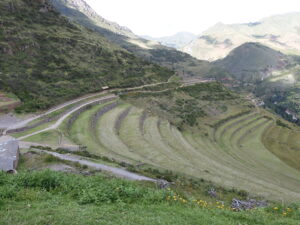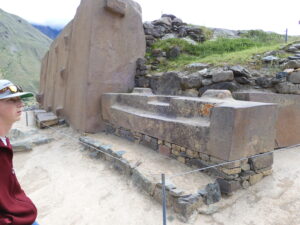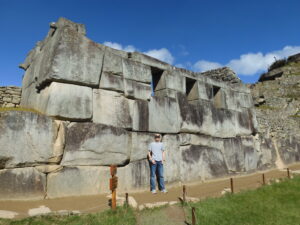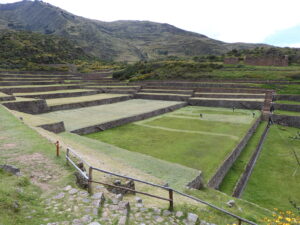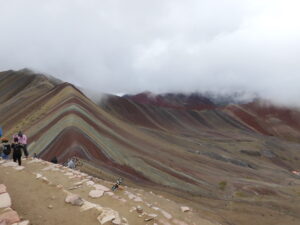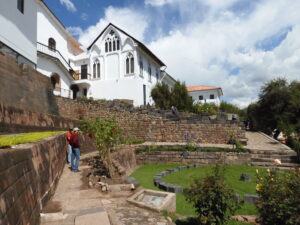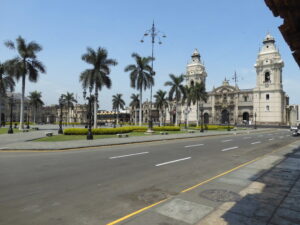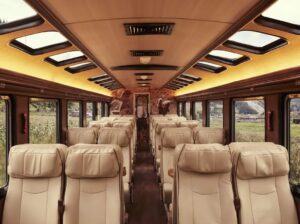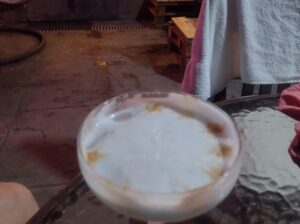Sites Near Cusco
Staying Close to Town
On our first full day in Cusco, I planned to jump around to archaeological sites in and around the city. The idea was that anyone impacted by Cusco’s elevation (12,000’) could easily head back to the cabin and rest, while the others carried on. There are four sites on the Boleto Touristico within a few miles of town. We went to all of these, plus Cristo Blanco. The boys and I walked to most of them. My dad started out walking, but quickly reverted to calling for rides from one site to the next. We took a slow walking pace, waiting whenever he needed a rest. Even so, the altitude and elevation gains were pretty hard on him. He grew irritable, and we encouraged him to continue rather than urging him to head back to rest. We should have been more attuned to his struggles and offered better advice. By the end of the day, we had hiked and climbed a lot, which definitely did not contribute to his enjoyment of the trip.
We first walked up to Saqsaywaman. This was the most impressive of the sites we visited the first day. It is a very sizeable fortress like structure on the top of the hill overlooking Cusco. Although my boys and I did not find the climb particularly difficult, the altitude was noticeable. This was in part because it was our first day at this elevation. It should also be noted that during the year prior to the trip, I had been averaging over an hour a day of pretty intense cycling, and my boys were lean and active 17 and 19 year olds. So, while we found this site hikeable, others might assess their own fitness and ability as the cost of an Uber or taxi up to the site is not prohibitive.
Saqsaywaman was built with massive boulders of varying shapes hewn to fit together with a degree of exactness not seen even in many of the other Incan sites. The site was apparently built as a citadel during the 15th century. The Inca empire burst onto the scene, subduing neighbors and expanding until it stretched from Ecuador to Central Chile, and from the Amazon to the sea in less than a century. Although their mathematical and literary progress do not appear to have been as advanced as that of the Maya, their precipitous geographic expansion made them the largest empire in the world at the time. Their reign was limited to a century by the arrival of the Spanish, who were aided in their rapid conquest of the Inca by internal strife over succession – a problem that also often plagued European powers. The massive boulders stacked together to comprise the Inca structures run alongside a shallow valley that can easily be walked by tourists as well as the ever present llamas and alpacas. All of these sites have several alternative spellings, as the original names were Quechua, a pre-Hispanic indigenous language without a written alphabet. (Continued)
Saqsaywaman Photos
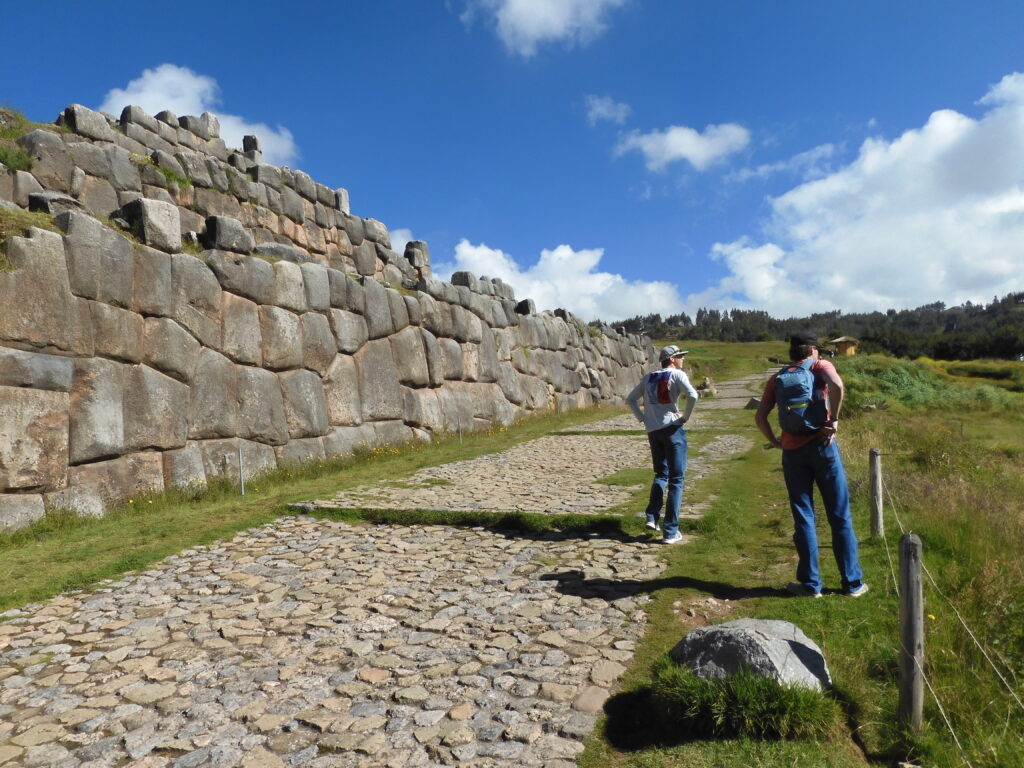
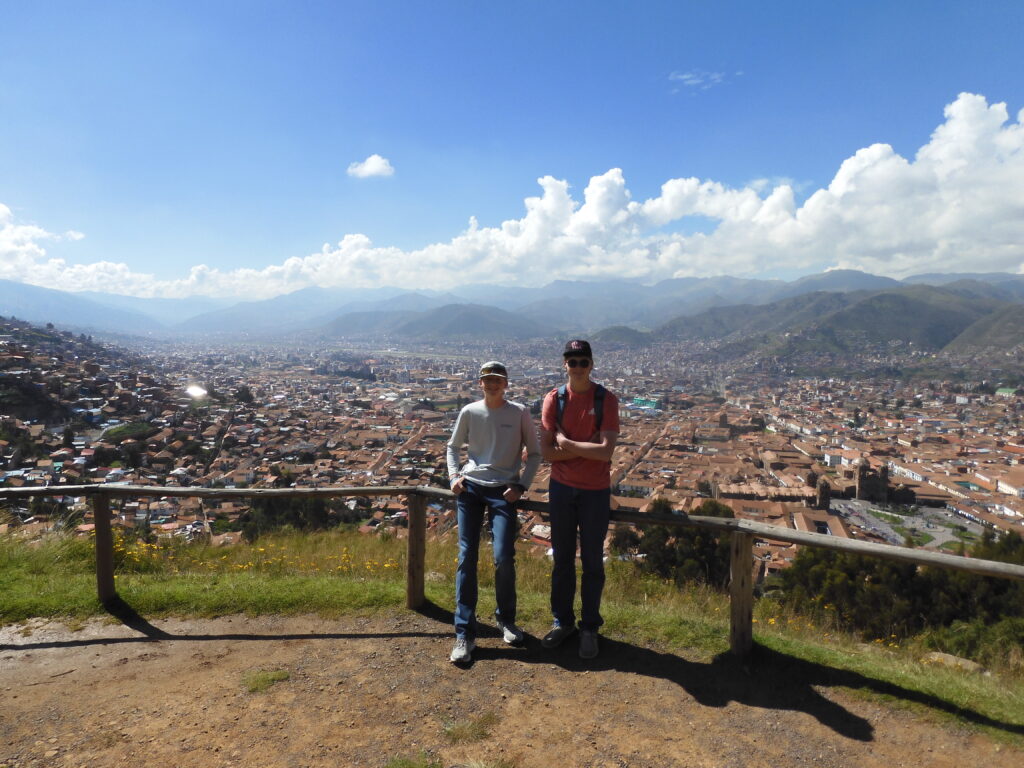
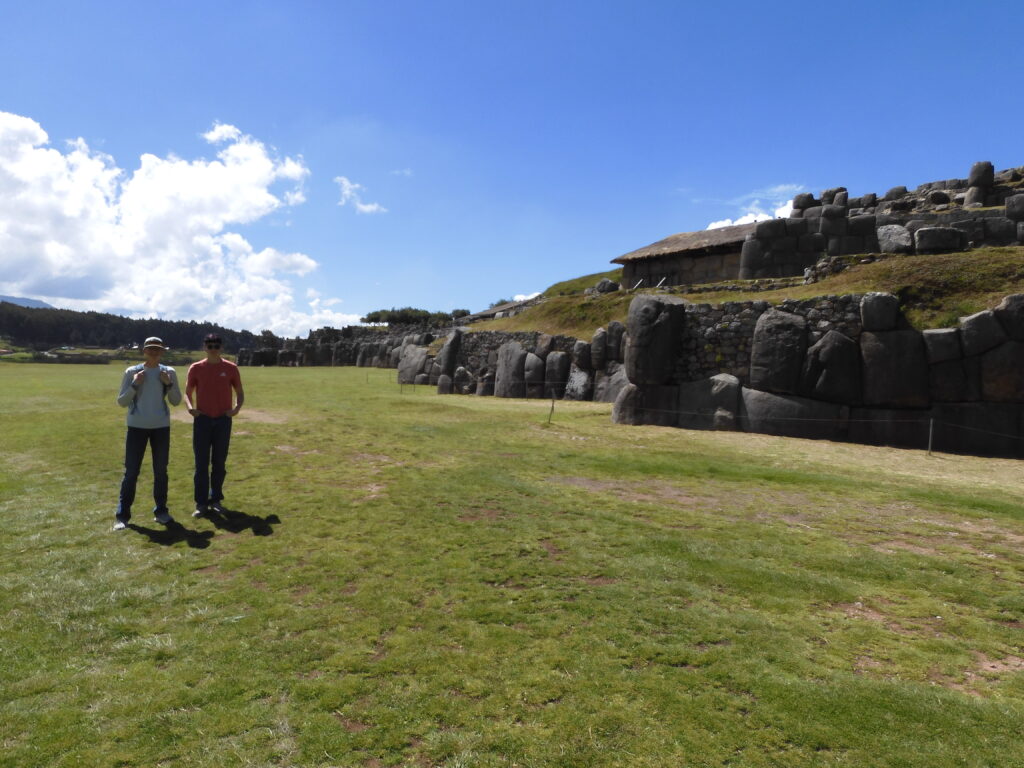
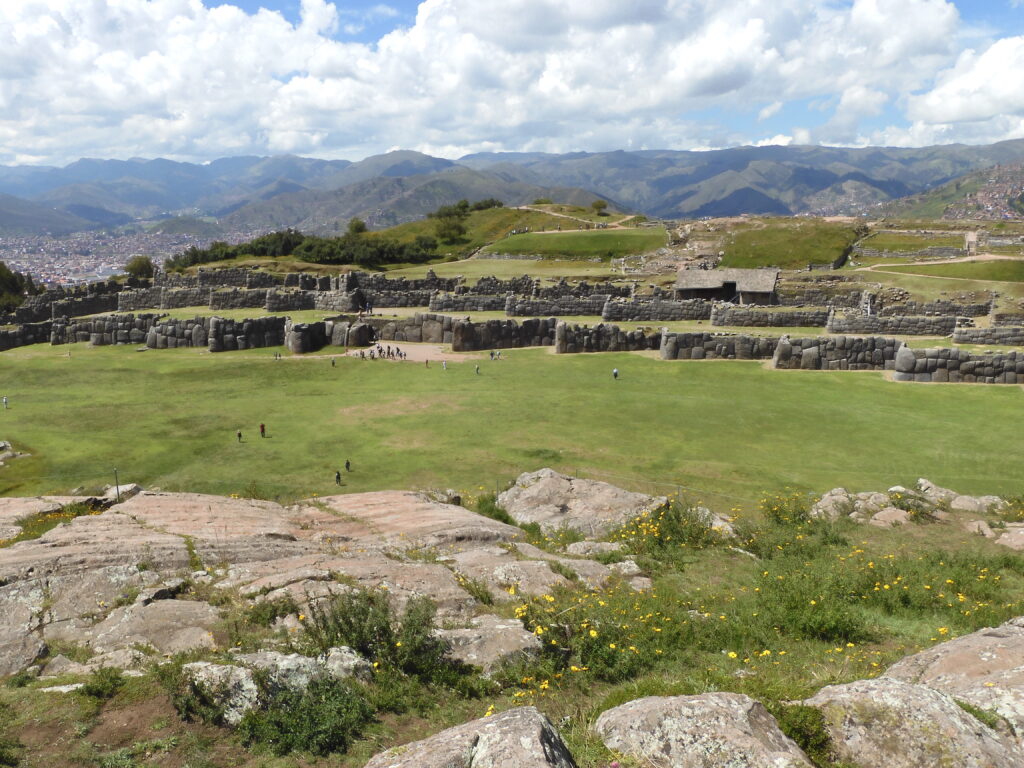
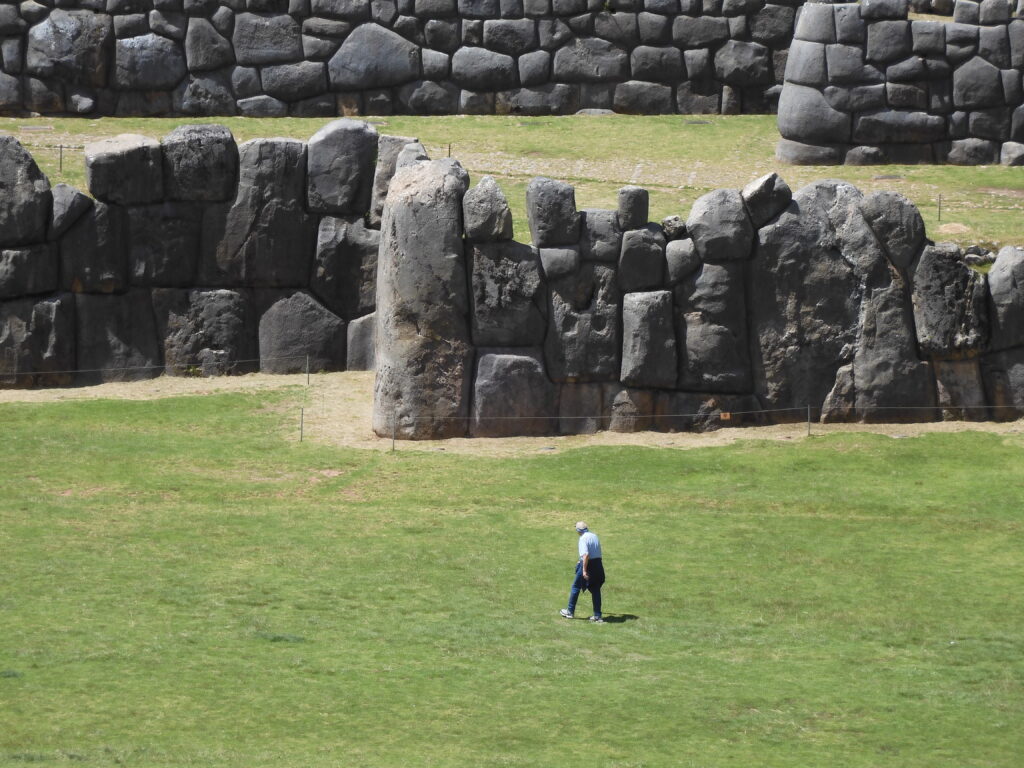
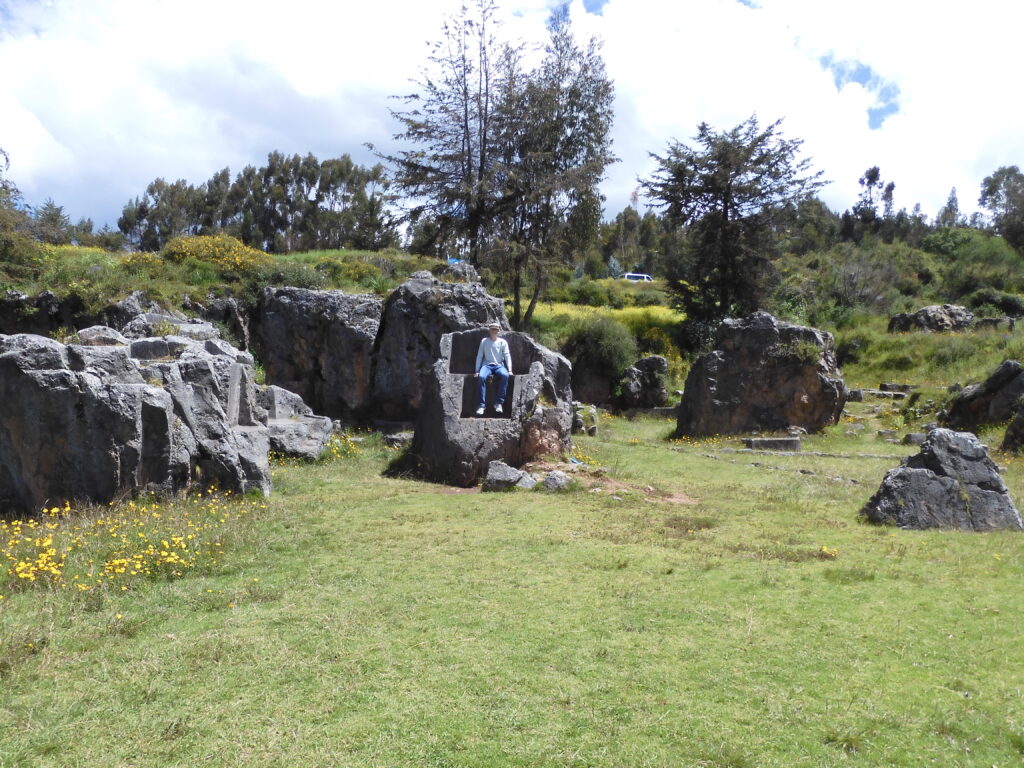

Just a few hundred yards away from the Saqsaywaman ticket office, you can take a path over to Cristo Blanco, a much smaller statue reminiscent of the Cristo Redentor overlooking Rio de Janeiro, and similar versions keeping watch over so many other Latin American cities. Stephanie and I hiked up to see this one at San Juan del Sur, Nicaragua. Since you can see the statue from Saqsaywaman, it is not difficult to figure out how to get to it.
From Cristo Blanco, it is only a ¾ mile hike to Q’enco, another archaeological site on the Boleto Touristico. The walk is not bad, considering most of the elevation gain occurs between Cusco and Saqsaywaman. That said, climbing most of the hill to the first site and walking it took a lot out of dad. The boys and I did not find the walk over to Q’enco difficult even after walking to and around both Saqsaywaman and Cristo Blanco. Fitness and expectation management is key. Your (ability to traverse) mileage may vary!
Q’enco is a religious site on a large rock complex. It is home to a huge “sacred stone” and an underground shrine. It is a much smaller site than Saqsaywaman, and while we found it useful to spend three or four hours at the there, any of the rest of these in my opinion could be toured in about an hour or so, not counting transportation.
After we had arrived back at Cristo Blanco, dad engaged a taxi to drive him from place to place and wait while he toured the sites. I do not recommend this technique for reasons further explained HERE. His driver did, however, haul us from Q’enco to Tambomachay. You could walk to Puka Pukara and Tambomachay from Q’enco, but it is a tad over 2 ½ miles. Puka Pukara and Tambomachay are nearly co-located. They are relatively small sites and their proximity allows for an easy “two for one” stop.
Tambomachay involves a short, relatively easy out and back hike to a pretty little site highlighted by some Incan ceremonial fonts or baths. As with nearly all Incan sites, there is some debate as to the precise use and importance of these structures. There is no doubt they were built to make use of the water feature at this location. It is a nice stroll, but definitely not a stand alone trip. It really needs to be combined with other sites to make the excursion worth leaving the city. (Continued)
Tambomachay Photos
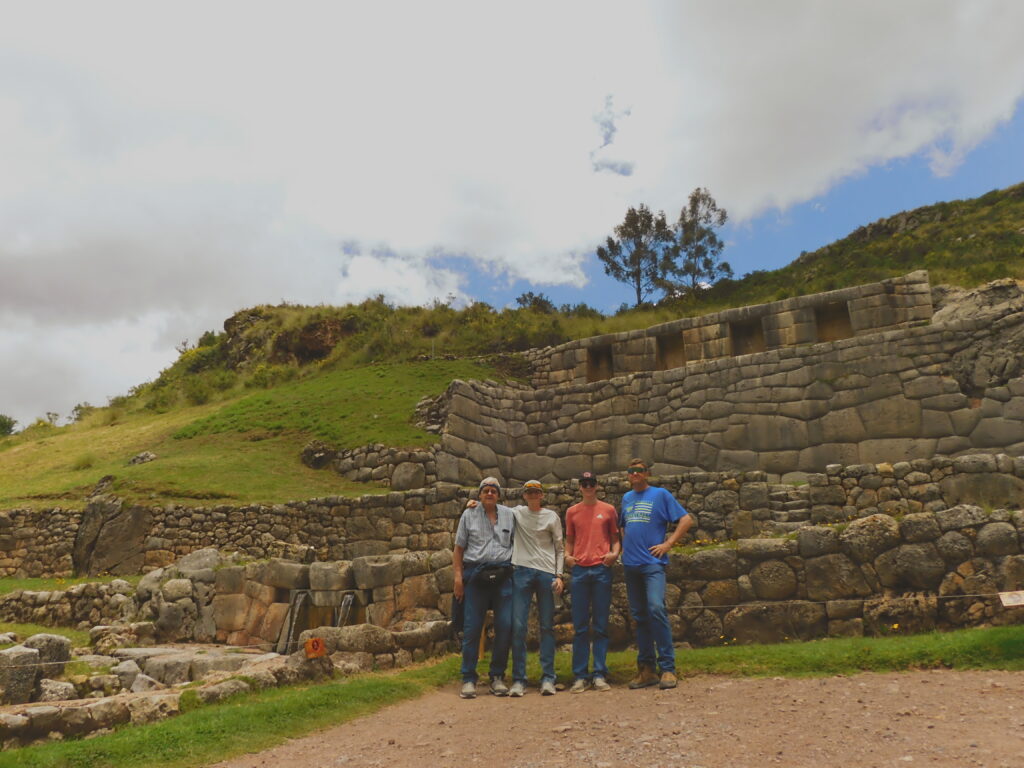

My boys were quite hungry by this time. Dad waited for us back at Puka Pukara while we walked into a little village a few hundred yards down the road to grab them some food. Dad’s very aggressive taxi driver tried to insist we visit one certain facility, probably run by some relative. We tried to order a sandwich or empanada to go, but the taxi driver talked over us and insisted to the waitress we go into the restaurant. Once he had done this, she wouldn’t listen to us anymore and took us in to be seated. Apparently, the whole thing was a ruse to get rid of us so he could go back and shout dad down into paying some exorbitant amount of money. Dad did this, and was thence abandoned at Puka Pukara until we returned.
We ate our sandwiches and walked back to visit Puka Pukara, our last site of the day. By then, a typical mountain afternoon storm had cropped up. We stood under the signage at Puka Pukara waiting for a small break in the storm to walk the grounds. After quite a wait, it became apparent the storms was not going to break any time soon. The boys and I decided to see what we could in the rain, while dad stood under the covered signs near the gate. It was a quick visit. Puka Pukara seems to have been a quickly erected fortress designed to protect the Inca road going into Cusco. The rock work isn’t as precise or intricate as in other places, but it has a unique reddish hue. It is worth a brief stop, but even in dry weather wouldn’t be a place you’d spend more than an hour or so.
After we had seen what we could in the weather – and been abandoned by dad’s taxi driver – I thought the best idea would be to call an Uber to take us the three miles or so back into town. One of the problems with Ubering in Peru is that once you are out of the city – even just by a few clicks – it can be impossible to get service or summon a car. This was the case for us. Fortunately, in Peru if you just wait for a few minutes, a bus is likely to come by and they WILL stop and pick you up regardless of proximity to anything like a bus stop. So we hopped on a bus headed back toward old town Cusco.
It is pretty hard to tell exactly where the local bus routes go in Cusco. They often appear to be aimlessly meandering around town. I decided my best bet would be to pull up the GPS on my phone and just get off when it looked like we were somewhere near our cabin. For dad’s sake, I tried to wait until the walk would be as short as possible. After a few instances where we appeared to get closer, then farther again from the house, I could see that we were about four blocks away. I gave up and figured this was about the best we’d do, and I had better get off before we got further away.
So off the bus we hopped in a steady mountain rain. Saturday is apparently local market day in Cusco. The area of town where we debussed had a massive market filled with local traffic completely undeterred by the driving rain. This was no souvenir peddling tourist market, this was the local exchange. The street was packed with shoppers. Vendors had every imaginable kind of plant, vegetable, and ware laid out on the walk or in the road, with brown street runoff rushing right through all of it – food and all. Scraggly live chickens wandered where they could, clucking and flapping. There had been some kind of garbage accident in the middle of the street and a trash crew was attempting to load the spilled trash back into the garbage truck by hand. It really was a mess by our standards. As we picked our way through this portrait of developing country poverty – a testimony to the difference between the luxury we Americans live in compared with most of the rest of the world – the moisture from the storm slowly grew into a steam coming from the mind and body of my dad. His anger grew from an ember to a fully fueled engine room furnace. By the time we got to the end of that market, my poor dad was angrier than any of the wet hens we had just passed. He was soaked, tired, and spent. We hadn’t encouraged him to head back when we should have, and he hadn’t kept awareness of his own limitations compared to our abilities – either that, or he hadn’t been willing to go home without taking us, too. Either way, the “warm” feelings we felt that afternoon were not sentimental.
One by one, we had our showers. Once we were all rested and cleaned up, we found a place for dinner. It was about 200-300 yards away, but we still Ubered…

